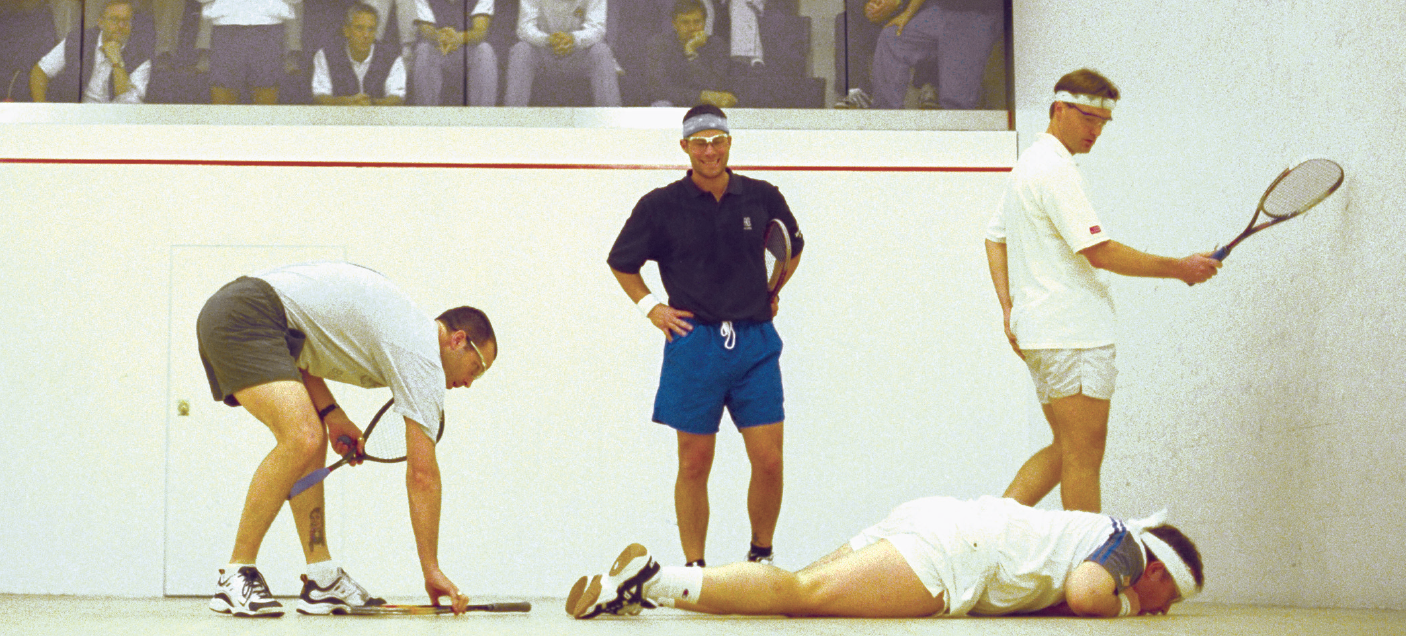
his opponent turned on, might also be forced to play a let IF he didn’t make every effort to clear. If he did, his team would be awarded a stroke.
The referee will also warn players that future failure to clear will result in a point to the striker!
By Mike McGorry
In 1991, the USSRA’s Doubles Rules Committee voted to change the “around” or “turning” rule. Previously, if a player came around or turned on the ball he/she was only entitled to a let where the opponents had not cleared adequately. The result was that players who “came around” and who were unaware of where their opponents were on the court, struck the ball, many times dangerously, in fear of not getting a let call because their opponents had cleared. The rule was changed to provide that if a person came around or turned on the ball he/she was entitled to a let no matter where the opponents had cleared to since the safety factor was predominant and we wanted to prevent the dangerous striking of the ball as aforesaid.
Over the past decade or so the abuse of the around rule has become rampant. Players will intentionally “come around” and call “let”, merely to get out of a defensive position. Certain players also have used the “around” as a means of on-court intimidation by striking their opponents with the ball. As a result, the US and Canadian Doubles Rules Committees have unanimously voted to adopt the following experimental rule for all play in the 2007-2008 season:
New Turning Interpretation
(To be used in USA and Canada throughout the 2007/2008 season on a trial basis)
A player who “turns” on the ball (or “comes around”) must strike the ball. This change in the rules is made to eliminate the abuse of the “Safety Let” provision, often invoked by a player to recover from a defensive position. In so doing, the following provisions apply:
1. The turning player must warn his opponents that he is turning by declaring his intent to turn (“Turning,” “Coming Around,” or some other appropriate VERBAL warning). Failure to do so will result in the loss of the point.
2. The Turning Player’s opponents must make every effort to clear—to give the turning player the full front wall and the side walls near the front wall.
3. The turning player must hit the ball.
4. If the ball hits an opponent, the turning player loses the point.
The only exceptions to this loss of point are as follows:
a. Where the striker, while planning to play his normal shot, is forced to turn to play the ball due to the ball “squirting” off the back or side wall, forcing the striker to turn unexpectedly. In this case, a let will be played, provided the striker could have played the ball.
b. When the opponents do not make every effort to clear (Para. 2 above). In this case a let will be played and the referee should warn the opponents that future failure to clear will result in a “point to the striker.”
We believe this rule will help eliminate the abuses of the old rule yet promote safety by awarding a point to a person who is hit by his opponent’s shot as well as clearing by the opponents. Your comments are welcome at mcgoospot@aol.com.


